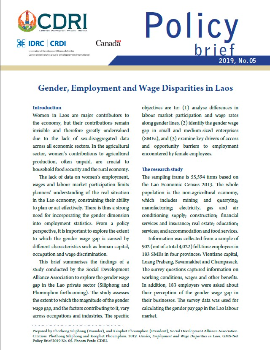
Analysing Chronic Poverty in Rural Cambodia: Evidence from Panel Data
Keyword: Chronic and transient poverty, panel data analysis, wealth index measurement, determinants of rural poverty, social and human capital
Abstract/Summary
This paper uses
four years of panel data on 793 households collected during 2001–11 to measure
chronic poverty in rural Cambodia and to identify its key determinants. A
household wealth index—a proxy for long-term welfare—constructed by polychoric
principal component analysis is used as welfare indicator. Both ordered
logistic and multinomial logistic regression models are adopted to identify the
causes of chronic and transient poverty by focusing particularly on five
explanatory variables: agricultural land and livestock, demography, human
capital, social capital and natural resources. To ensure the robustness of our
results, two poverty lines are applied: 40th percentile and 60th percentile of
the wealth index. The findings indicate that households experiencing chronic
poverty account for only 4–10 percent of the total sample, while transient
poverty affects 40–52 percent. Among the total poor households, transient
poverty is 84–90 percent. Our ordered logistic regression reveals that the
composition of household size, the education of the household head, social
capital (i.e. connection with three or more people in the community),
agricultural land and livestock are likely to be the most important factors
that help the chronically poor to move into better off groups. Common property
resources seem to have an opposite effect. Multinomial logistic regression
results reconfirm that household composition, particularly the number of
children aged 7–14 years and females aged 15–64 years, the education of the household
head, agricultural land and livestock play an important role in reducing the
likelihood of chronic poverty. It appears that education, agricultural land and
livestock would also help to reduce transient poverty. Social capital is likely
to be strongly correlated with both transient poverty and being never
poor.
DOI: https://doi.org/10.64202/wp.66.201202



